Written by Vaishnavi Rathore
A herd of buffaloes crosses the muddy path, one of which decides to roll around the expanse of mud he finds on the way. He is soon joined by his mates. To get a vast, swampy area in a metropolis like Delhi seems like quite a luxury. The herd trots further away from the small market and residential lane of Jagatpur, Wazirabad in North Delhi, towards the open fields. The Yamuna flows about a kilometre away from here, making this area one of the more fertile areas of the city. From here, produce of jowar, spinach, cucumber, and gourd make their way to the Azadpur Mandi, the largest wholesale vegetable market in India.
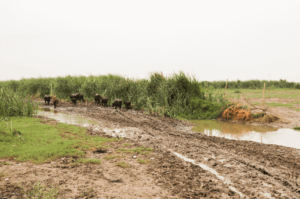
The buffalo herder and his friend, both middle-aged men, usher them towards the fields that they own — a vast 40 bighas (around 16 acres). “We are scared to grow crops in all the land that we own,” says Naresh, the friend of the buffalo owner. “Some of the crops don’t grow because of less rain, and some get destroyed if it rains too much and our fields get inundated.” They point towards the pucca road and the market adjacent to the fields which are constructed about 5 feet higher than the low-lying fields. “Many times, it gets flooded right up till there,” they inform.
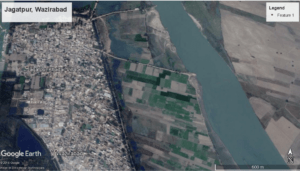
Flooding is neither new nor surprising for Delhi. In fact, in 2014, the UN Panel report on climate change put Delhi among three of the world’s megacities that are at high risk of floods. But that is only a part of the water problem that Delhi is currently facing. 11 of India’s 20 largest cities face an ‘extreme risk’ of water stress, according to a recent water stress index. Delhi is one of them.
In light of increasing demand and need for water resource management, the Delhi government recently got approval from the National Green Tribunal (NGT) for a pilot project between Wazirabad to Palla region. It aims to retain excess water during the monsoon season by creating a reservoir of small ponds in the flood plains of Yamuna—the same floodplains which are home to the buffaloes and Naresh’s agricultural fields.
READ ALSO: Yamuna Floodplain Reservoir: Technically Feasible or a Grand Announcement?
Speaking about the government’s promise to pay Rs 77,000 per acre to all those farmers who are willing to give their land on lease to the government for building farm ponds, Naresh says, “It will be beneficial for us,” he says. “Of the 40 bighas that we have, some area anyway has become unproductive. Giving it on lease to the government for the ponds will be an added advantage to us.”
Three children between ages 2 to 8 are playing a little further away. Their mother, Iqra*, a migrant from Haryana, calls after them. “The ponds might help mitigate the floods. The water might stop in the depression and we may not receive all of it,” she says, preparing dinner on their chulha (stove) outside their jhuggi, a makeshift shanty. The fields here are occasionally punctuated with such house structures.
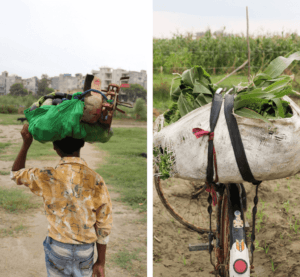
The Tenancy Problem
Iqra’s husband, Ali* has just finished the day’s work. He is a cultivator, but unlike Naresh, he does not own land; he is a tenant and works on 3.45 bighas (a little more than an acre) of land that has been leased to him for an annual rent of Rs 15,000. While someone else owns the land, it is Ali who tills, cultivates, sows, irrigates, harvests and sells the produce.
However, there are no legal records to prove that he is a tenant. In Ali’s words, “zubaan ki baat hai”; the agreement is an oral one, making them a vulnerable group of cultivators.
“One time, the owners of the land asked us to leave because they decided they wanted to self-cultivate that season,” Iqra says. “We couldn’t do anything about that, and had to move and look for a new place.”
Ali is aware of the proposed Yamuna reservoir through his neighbour Shamun, who is working as a labourer in the pilot project where they are clearing out fields right now before beginning to dig the ponds. “But, it’s not our land to give. How is the Rs 77,000 an advantage for us?” asks Ali. By ‘us’, he is referring to the majority of families on the floodplain here who are tenants.
His concern seems valid; as far as tenancy laws are concerned, India seems to be in a soup. While many interventions have been taken by states to reform tenancy laws, prominent defects and loopholes have limited their potential reach. As of now, some states have banned it, while some have restricted it making them a section of cultivators which are mostly invisible in policy decisions.
Tenants like these have always remained vulnerable; 36% of the tenant farmers of India are landless, while nearly 56% of them have less than one hectare of land, as reflected by the 59th round of NSSO. And if a step like this does not take them into account, it will only further their vulnerability. In this particular case, any amount paid for leasing out land might only go in the hands of the owners of the farmlands, while the tillers remain untouched. For them, instead, both the area to cultivate and subsequently, their annual income, would reduce.
Shamun soon joins us in Ali’s compound and makes himself comfortable on a charpai. With his experience of working at the pilot project, he brings in his two bits. “I have not spoken to any tenants there who are going to be impacted by this,” he says. “But, maybe the government would compensate the tenants for their fields that would be destroyed in the process. The Rs 77,000 seems like it would go to the owners.”
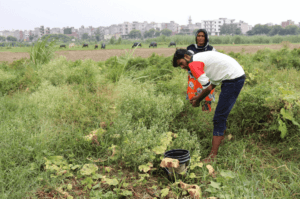
Leaving out the Vulnerable
Confusion and concern about compensation or rent for tenants hang in the air. With no one with clarity on this subject, a question seems inevitable; were there any local consultations regarding the project held with people here?
“About 20 days ago, a man came here saying that these farm ponds will be built,” says Ismail, a young member amongst his large family. “I do not know if he was from the government or not, but he mentioned that ponds will be built — that’s all.” What Ismail mentions can barely pass off as a ‘consultation’. Other than him, no one mentioned any representative of the government coming here to hold local consultations. It seems that one of the most important stakeholders might have been missed out upon.
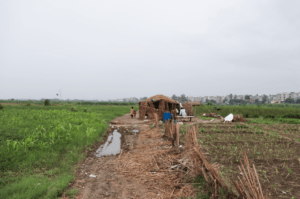
Ismail and his family have moved to Jagatpur a couple of months back. They were earlier residing close to the Majnu ka Tilla area. Following the inauguration of the new and controversial Signature Bridge in November 2018, plantation began here this year — an area which was home to many like Ismail and his family. They were all displaced, with some heading back to their villages in Haryana, and some finding residence elsewhere in the city.
As long as Ismail and other people in his line of work remain visible to the government only as ‘encroachers’ who need to vacate an area and not as citizens whose participation in decision making is pertinent, confusion, fear and vagueness will continue to loom large. Any effective intervention of the government that concerns this section, will likely meet implementation challenges; including the new seemingly welcome reservoir project in the floodplains.
*name changed


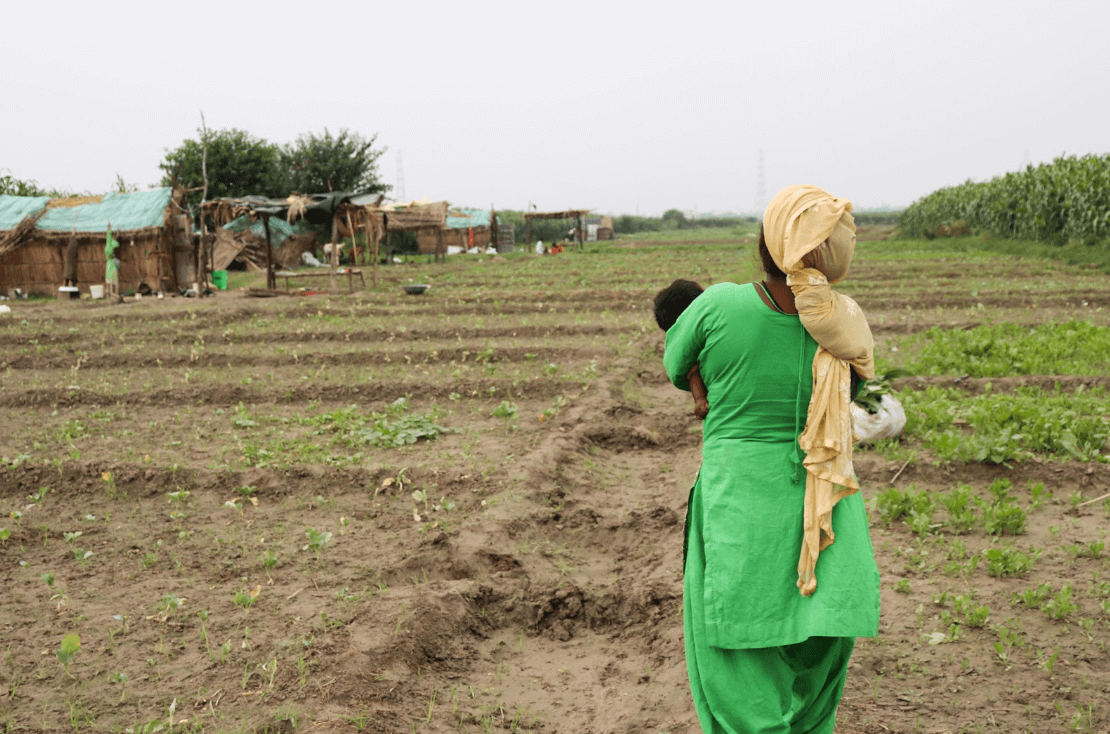




[…] image from “It’s Not Our Land to Give”: Tenancy and the Yamuna Floodplain Reservoir Project by Vaishnavi […]
[…] on the banks of river Yamuna. Sitting on a charpai in Ali’s home, I would be mapping Ali’s story of migrating from Uttar Pradesh to Delhi for work, raising a family of four, and how many like him […]